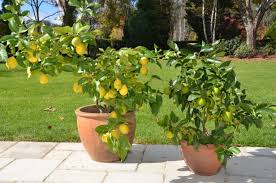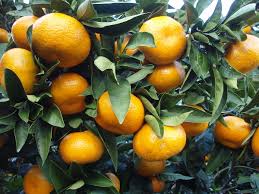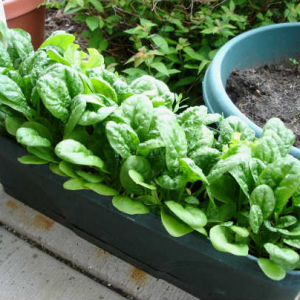A citrus for all reasons
Keith Mundy

Citrus are presently one of the most popular categories of fruit trees available in nurseries. This is mainly due to the work that has been done in recent times to provide dwarf growing forms that are more suitable to pot culture or for our ever decreasing house block sizes.
We now have many varieties that are on much improved root stocks, which in turn give the plant a better ability to survive under many different climatic conditions and soil types.
In growing citrus your location is very important as many are not suited to heavy frosts or cold southerly winds.
Optimal temperatures for growing citrus are between 25 and 30 degrees C. When temperatures get above 38 degrees growth is inhibited, although the plant will survive up to 50 degrees. Oranges and lemons are more suited to colder parts of our area although some frost protection is required in very cold locations. Limes and cumquats require a really warm, frost-protected site.
Satsuma mandarin, Meyer lemon and sour orange are more tolerant of cold and can be grown in a more open, exposed position. Locations along the coast like Narooma and Bermagui are suited to all citrus as long as they have protection from the cold southerly winds.
Autumn through spring and into summer are the best times to plant citrus, with the selection of the site most important.
The site should be well drained with a compost-enriched soil and a full sun position. As mentioned previously a site that has wind protection but especially south wind protection is very important. Dig a wide hole but not massively deep and add a commercial planting compost to your soil. If you have made your own compost ensure that it has broken down sufficiently to mix with your soil. Remember, don’t completely change your soil when planting, but improve the soil you have.
 When you backfill the hole, check to make sure that soil does not come up above the graft. Add just enough soil to cover where the soil came up to in the pot.
When you backfill the hole, check to make sure that soil does not come up above the graft. Add just enough soil to cover where the soil came up to in the pot.
If you don’t have sufficient room in the garden then try one of the dwarf forms. Mandarins, oranges, lemons and limes come in dwarf forms with at least two varieties per fruit available.
Pot culture of citrus is a bit different to growing plants in the ground. Planting in pots requires a reasonable size pot so sufficient potting mix can be added. The more soil gives a greater water- and nutrient-holding capability. The smaller the pot the quicker the plant dries out and this leads to an unthrifty tree. Nutrient leaches out more quickly so it is important to feed the potted plants more regularly.
Fertilising of citrus should take place in spring and summer with the addition of chook manure and a side application of fertiliser in autumn.
Citrus are gross nitrogen feeders so a specially formulated citrus fertiliser is most desirable. Apply at the dripline of the plant and water in well.
When fertilising potted citrus, use a water soluble form so root burn is alleviated. A side application of fish- or seaweed-based fertiliser on a regular basis outside the regular fertilising program will also benefit the plant.
Citrus have several pest problems including sap-sucking pests like shield bugs, leaf miner and scale, and fungal problems including black spot, septoria spot and citrus blast.
Ask your local nursery person for control measures to combat these problems as there are both chemical and organic forms of control for all these pests.
Keith Mundy


